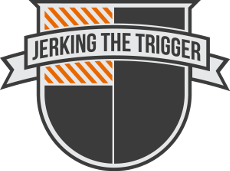The HK 14205 – A Serious Sleeper
I have been able to spend some quality time with a knife that isn’t really new to the market but you don’t seem to hear a lot about it. It seems to be overshadowed by several other “hard use” knives and never comes up in EDC conversations, yet it will fill both of those roles easily. So why should you pay attention to the Benchmade HK 14205? Let’s take a look.
Stats and Features
The 14205 is designed by Mike Snody, the money man himself. His finger prints will be obvious to anyone who is familiar with his work. It is manufactured by Benchmade and features their excellent Axis locking mechanism.
The blade is made from .150″ thick 154CM steel and is 3.40″ long. The blade features a spear point shape with an unsharpened swedge which renders a very sharp and usable point. The handle slabs are thin, textured G-10 over full steel liners. There is a large, aggressive thumb ramp. It is 4.5″ long when folded and 8.19″ long opened.
As you can see, this knife was made to be used, and used hard. However, it is also very slim and refined. So is this a hard user, an edc, or both? Maybe we can find out by comparing it to a more well known Benchmade folder.

14205 top, 520 bottom
A Comparison
The Benchmade 520 is a knife that does get talked about, at least more so than the 14205. Before I saw the 14205 in person, I figured it would just be another 520-like knife. While there are some similarities, these are two very different knives.

Note the blade thickness and large stop pins – these are beefy folders!
Both knives have 3.40″ blades made from 154CM. However, the 14205’s blade is thicker .150″ versus .130″ on the 520. Both have the large, beefy stop pins and rock solid lock up. Both offer a good grip and enough handle for your whole hand. This knife, like the 520, is obviously built for abuse.

Open construction and classy stand-offs of the 14205 versus the closed back spacer of the 520
However, the similarities end there. The 14205 features beautiful, sculpted stand-offs. This open construction is attractive, makes it easy to clean, and keeps the weight down. It is slimmer than the 520 without really sacrificing grip. It weighs only 4.92 ounces versus the 5.68 ounces that the 520 weighs. So not only is this a hard user, but it is also a refined EDC worthy knife.
Nitpicking
I am going to pick a few nits. I think the 14205 falls just touch shot of what it could have been were it not for two small items. If the full steel liners were skeletonized (like they are on the 520), it could have been even lighter without sacrificing strength. Also, it would be great if the pocket clip was attached as high as the one on the 520. This would allow the 14205 to sit lower and more discreetly in the pocket. In the scheme of everything that this knife has to offer, these are very small issues.
Conclusion
I really like this knife. It is capable of everything the beloved 520 is capable of, but it is far more pocketable. It almost seems to be having an identity crisis. Maybe that it why it doesn’t really get mentioned often – it just fits too many categories. This knife is definitely worth talking about mroe often, especially for the price. These can be picked up from very reputable sources for just over $100. This is one serious sleeper!






























